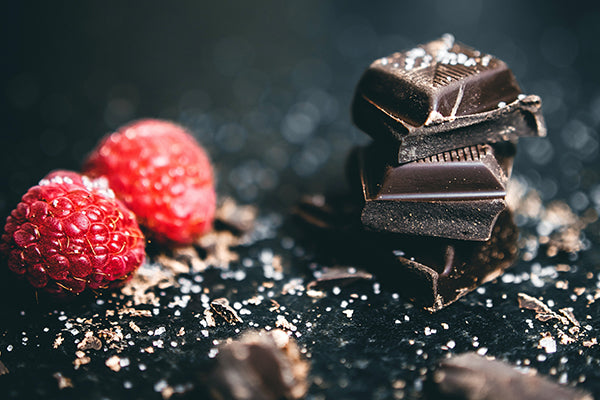Let’s be clear—a guide on how to eat chocolate teeters dangerously close to the edge of pretension. We’re not here to tell you the right or wrong way to eat chocolate. Chomp and chew? Nibble and savor? Your way, in all its glory, is the right way. But it might not be the only way.
The rise of the bean-to-bar movement has elevated the chocolate game. These aren’t your grandmother’s Hershey bars (as delicious as they are). Artisan chocolate is complex, robust, and at times, challenging. But it’s a challenge worth unpacking.
Like a great wine that reveals its charms to a thoughtful taster, artisan dark chocolate rewards those that speak its language. Our goal is to share a few tips, tricks, and insights that can help unlock the complexity.
The savvy wine taster will recognize similarities between chocolate tasting and wine tasting. The principles are the same. The complexity of artisan chocolate can be remarkable—sweet and fruity, nutty and earthy, spicy and roasted. It can taste like many things, but like a great wine, chocolate should taste like the place it came from.
Let’s dive into how to eat chocolate like a pro.

Get ready.
Chocolate is best at room temperature—70 to 72 degrees Fahrenheit. A few degrees either way makes a big difference. Think of the importance of temperature for wine tasting. When too cold, a red wine can be closed-off and overly-tannic; too warm and the alcohol can cause imbalance. The same goes for chocolate.
Take a look.
Before you pop the chocolate into your mouth, take a look.
Do you see any bubbles or irregularities? Does it have a spotted or dusty surface? This can be an indication that the chocolate has bloomed, meaning it has been exposed to hot temperatures and cooled quickly. Perfectly safe to eat, but an imperfection to the chocolate pros.
Note the color. The color and intensity of the color can reveal the origin and percentage of the cacao. Peruvian chocolate tends to have amber shades of brown, while African chocolate tends to be darker.
Take a whiff.
Gently rub the chocolate with your thumb and forefinger to release the volatile compounds. Snap the chocolate in half. We’re looking for a solid, clean break.
Give it a sniff. What do you smell? Are the aromas classic chocolate notes of cocoa and vanilla? Do you notice bright fruit notes such as raspberry and cherry? Maybe a hint of smoke? The initial aromas are a hint of what’s to come during the tasting.

Take a small bite.
Now for the moment of truth. Take a small bite—operative word, small. The first bite warms up the tongue. Notice how the chocolate interacts with the different parts of the tongue. Focus on the five flavors—sweet, sour, salty, bitter, and umami.
Take a bigger bite.
The second bite is the grand finale. Let the chocolate rest on your tongue. How does it melt? Think about the texture of the chocolate—creamy, velvety, grainy, rough. Separate the flavor experience from the texture experience. Both are critical components to world-class chocolate.
Give it a minute.
Resist the urge to take another bite right away. Ponder the aftertaste. Does the flavor change with time? How long does it last? Just like wine, a chocolate’s finish is a marker of quality. Most importantly, do you like it?
That’s it. Rinse and repeat. Make sure to take notes on your favorite producers, origins, and even cacao varieties.

Host your own chocolate tasting.
Don’t be afraid to sample different chocolates side-by-side. A variety of combinations can illuminate the nuances between chocolate types, producers, origins and cacao types and percentages.
Just make sure you have palate cleansers ready to go. Lemon water and crackers will do the trick.
Buy artisan chocolate from around the world.
We offer a range of artisan chocolate options that we’ve tried and tested. From single-origin dark chocolate to single-estate chocolate, we offer options worthy of your new chocolate tasting skills. Get started today.
Shop Peruvian Chocolate: Cacaosuyo Peruvian Dark Chocolate (2.47oz)
Shop Madagascarian Chocolate: Akessons Single Plantation Chocolate Madagascar (2.12oz)


